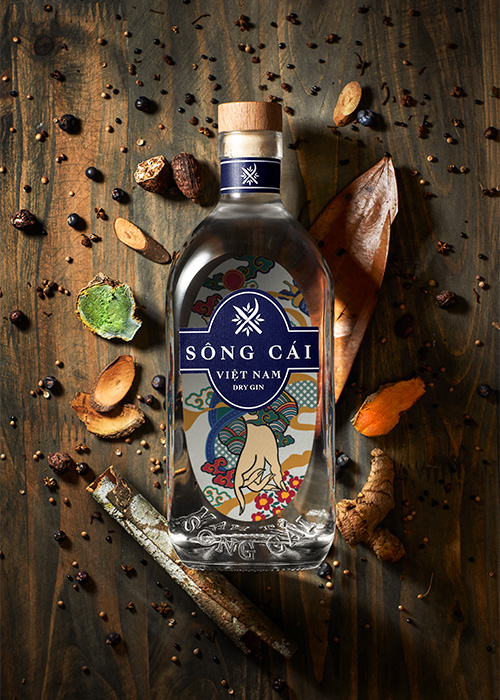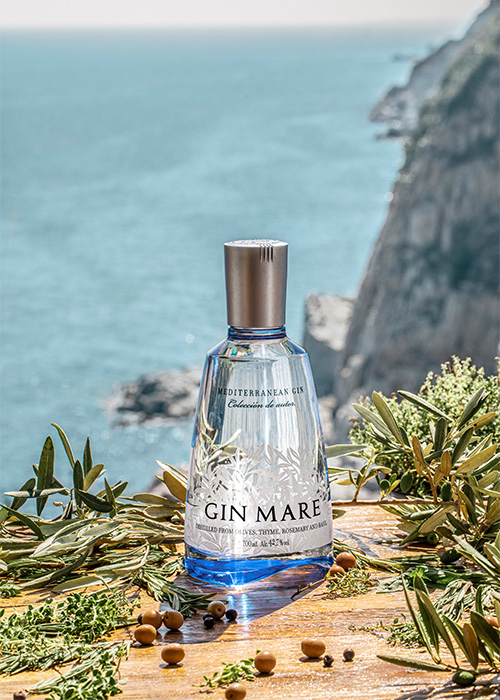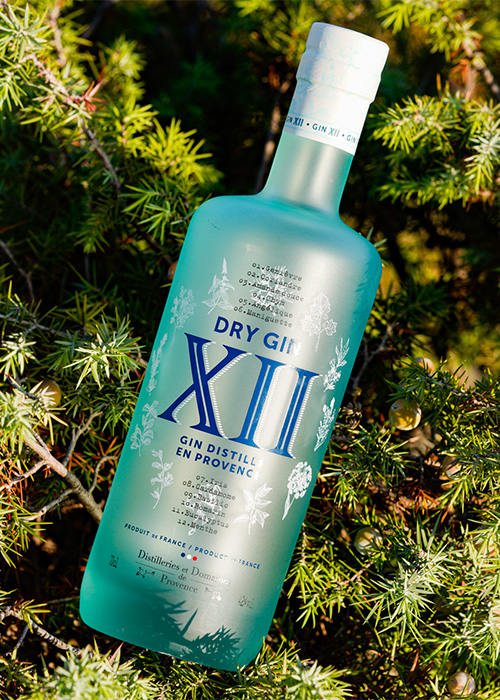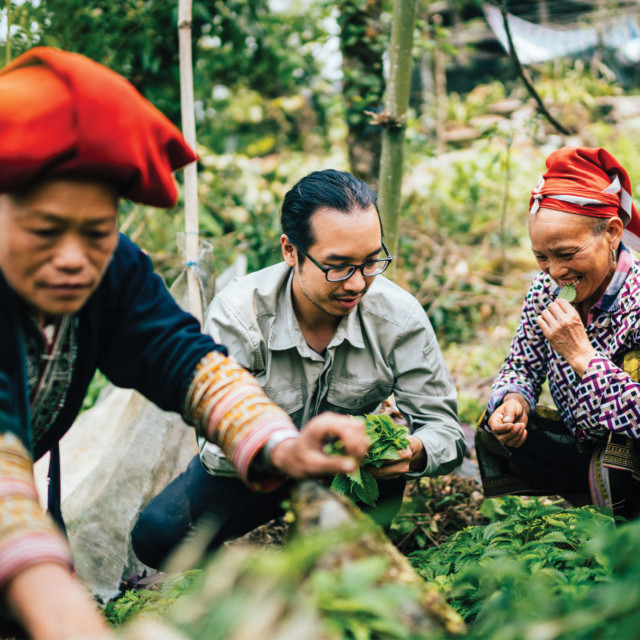Gin’s defining characteristic, regardless of country of origin, is juniper. Many other botanical components in the form of herbs, spices, and fruits are often included in gin to create distinct flavor profiles — as brand expressions, to work within specific cocktails, or even with specific garnishes (looking at you, Hendrick’s and cucumber).
While gin brands available in the U.S. have long been predominantly English or American in origin, a rise in the availability of other international gins showcases an additional element that is often expressed through unique botanical profiles: geographical identity. Elements such as sugar kelp (Scotland), yuzu peel (Japan), or myrtle (Australia) harmonize with more common gin botanicals such as coriander, citrus peels, and the mandatory juniper to give a hint about who’s making the gin and where it comes from.
To better understand this trend, VinePair spoke with three international gin producers — whose gins have all become available in the U.S. in the last few years — about their rationale and approach to creating gin with a strong sense of place.
Sông Cái Việt Nam Dry Gin

Sông Cái Việt Nam Dry Gin is a bright, spicy gin from Hanoi with a uniquely Vietnamese personality. From the bottle artwork commissioned from Vietnam’s last remaining traditional Hàng Trống artist to the 16 distinct botanicals used in the maceration, “every step of the process is fueled with cultural pride,” says Sông Cái’s founder, Daniel Nguyen.
But for Nguyen, gin was more than just a means of telling a story of Vietnam and, by extension, bringing attention to its more traditional spirits. As an ethnobotanist who specialized in cataloging Vietnam’s native and heirloom botanicals, Nguyen felt that producing gin was an opportunity to help create a beneficial economic cycle for local farmers. Vietnam is a socialist republic that gives land for free to those who agree to farm it, but, according to Nguyen, “when you give someone land and there’s no economic model or market in place [for the crops], that doesn’t work as long-term poverty reduction. Gin was really a way for us to tell stories of Vietnam’s botanicals, reach the market quickly, work with a broad range of farmers, and find a wide target consumer base.”
With Vietnamese agricultural and cultural terroir in mind, Nguyen first released Sông Cái Việt Nam Dry Gin in 2018, with 16 botanicals from Vietnam’s highlands. (The brand also produces a Floral Gin that nods to the importance of flowers in Vietnam’s ceremonial traditions and showcases notes of flora from its river deltas.) Everything but the necessary juniper is sourced locally, including components such as jungle pepper, green cardamom, and heirloom pomelo. Other native ingredients that were tested but ultimately not included were various opiums — “they have a nutty flavor, but the gin would never get approved for export to the U.S.” — and smoked buffalo meat, which is “really an acquired taste,” says Nguyen.
Gin Mare Mediterranean Gin

Gin Mare Mediterranean Gin is a savory and herbaceous gin crafted in Spain that is meant to evoke not only a sense of place, but a mindset. Formerly an importer of premium spirits to Spain, the team behind Gin Mare wanted to develop their own spirit in response to a Gin and Tonic — “Gintonic” in the local parlance — craze that seemed to hit Spain “overnight” about a decade ago, according to brand development manager Jorge Balbontin. (Even a casual search for “gin consumption per capita” shows Spain as the top spot in Europe by a large margin.)
To differentiate the brand from a number of Spanish gins entering the local market around the same time, Balbontin knew that a clear botanical point of view was necessary. “The word Mediterranean hit us. We understood that it wasn’t just a place, a passage, or a geographical location,” Balbontin says. “It was a lifestyle.” One that spoke to a laid-back attitude, a communal table, and, frankly, the importance of olives. Consequently, olives added more than just flavor, but also body to the spirit, such that glycerin — commonly added to gin to establish mouthfeel — wasn’t necessary.
Evoking a distinctly Mediterranean vibe eventually came down to emphasizing four major botanicals that represented Mediterranean gastronomy, sourced from throughout the region: thyme, rosemary, basil, and olives. Other common Mediterranean herbs such as oregano and bay leaves were not included because of their tendency to drown out juniper’s flavor. Like Nguyen, Balbontin and his team also experimented with additional cultural products that wouldn’t ultimately make the cut: “We tried all sorts of wacky, crazy stuff, from cheese to ham,” he says.
Gin XII

Gin XII, whose fresh, almost menthol flavor is alluded to by its cool blue bottle, hails from Forcalquier, a tiny region within Provence, France.
Gin XII (read as “gin douze”) is crafted by Distilleries et Domaines de Provence, which makes absinthe, pastis, and other Provençal liqueurs in addition to gin, the most recent addition to the brand’s lineup. Co-owner Antoine Robert credits the recent rise in French gin to a moment in Cognac about 25 years ago, when producer Maison Ferrand successfully petitioned the region’s regulating body for the ability to use its Cognac stills during the off-season to produce other spirits. Other makers of French spirits soon followed.
For Robert, making gin was an easy decision, since it aligned with the brand’s Provençal identity. In fact, juniper trees already grew on the distillery property. “That’s what felt really natural in the idea of launching a gin,” he says. “We could not be faithful to what we are with a vodka, but with a gin, yes.”
The development of Gin XII as a distinctly Provençal spirit was a process that included foraging for only wild plants that grew in the region. Robert explains that Provence has an ideal, arid climate for gin botanicals, making for plants with robust aromas — especially when wild grown. Notably, local lavender is absent from the list of 12 botanicals from which the brand takes its name due to its tendency to be “overpowering,” according to Robert.
“I really think that the spirits are, as much as wine, representative of the know-how and the terroir,” says Robert. “We wanted to use our know-how, and to launch a gin only when we were sure to have a very good product, good balance, and a Provençal identity.”
10 International Gins to Try:
- Sông Cái Việt Nam Dry Gin (Vietnam) Average price: $33.99
- Gin Mare Mediterranean Gin (Spain) Average price: $39.99
- Gin XII (France) Average price: $39
- Isle of Harris Gin (Scotland) Average price: $60
- Glendalough Wild Botanical Gin (Ireland) Average price: $35
- KI NO BI Kyoto Dry Gin (Japan) Average price: $80
- Kyrö Gin (Finland) Average price: $32.99
- Malfy (Sicily) Average price: $28.99
- Jin Jiji Darjeeling India Dry Gin (India) Average price: $25
- Broken Bones London Dry Gin (Slovenia) Average price: $44
This story is a part of VP Pro, our free platform and newsletter for drinks industry professionals, covering wine, beer, liquor, and beyond. Sign up for VP Pro now!
